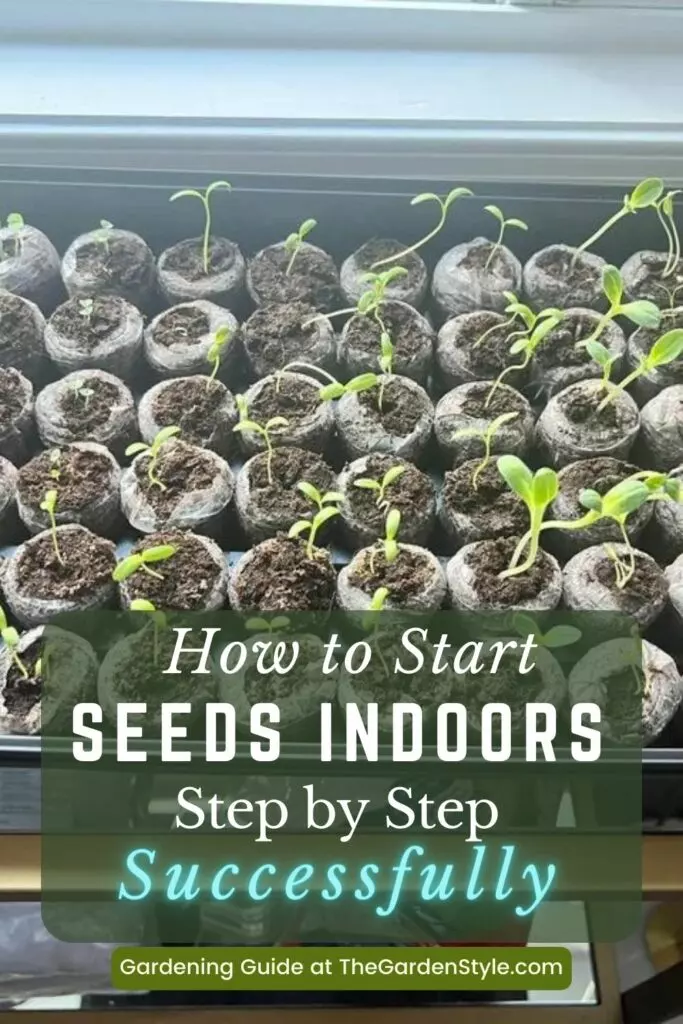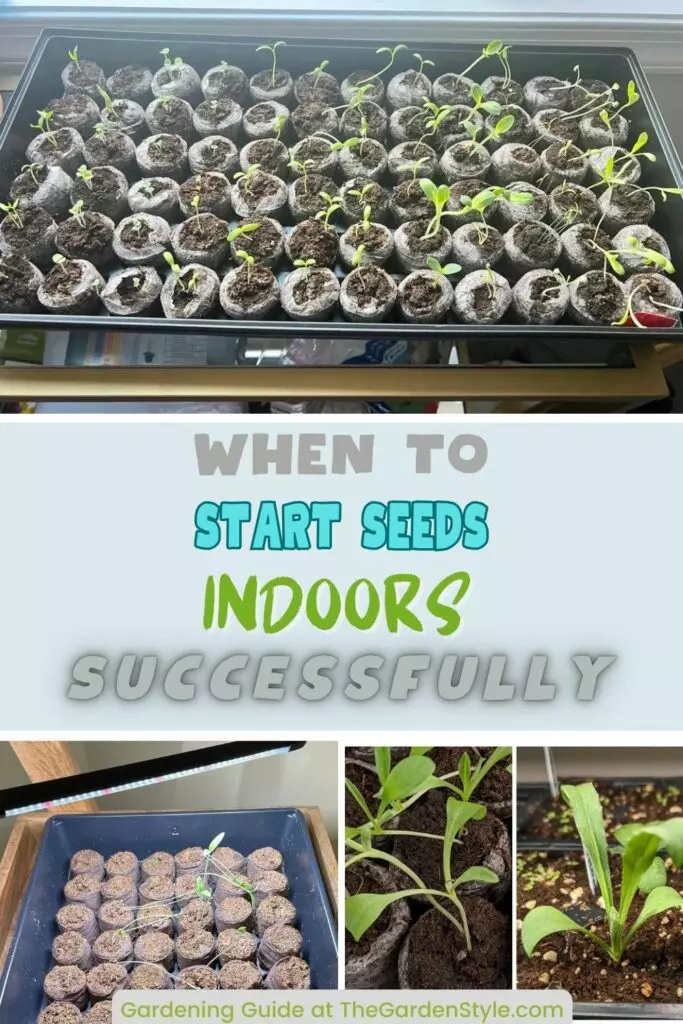Want to get a jump on the growing season and enjoy earlier harvests? Starting vegetables, herbs, and flowers from seed indoors allows tender plants to get a head start on summer. With the right indoor conditions, you can grow robust seedlings ready to thrive when moved outside. This guide covers choosing suitable seeds, setting up grow lights and heat, proper sowing techniques, seedling care, and hardening off before transplanting. Follow these tips on how to start seeds indoors and you’ll have robust, vigorous plants ready to quickly establish themselves in your garden beds for maximum yield. Get ready to turn your indoor space into a seed oasis!
Table of Contents
Benefits of Starting Seeds Indoors
Starting your garden plants from seeds indoors allows you to get a head start on the growing season. By sowing seeds weeks before the last expected frost, you can give your seedlings a chance to become established. This head start often translates into earlier harvests and larger yields. You also gain more control over growing conditions when starting seeds inside. With the correct setup, you can provide consistent moisture, stable temperatures, and adequate sunlight. Starting seeds indoors makes it possible to grow plants that need a long season, like tomatoes, peppers, and eggplants.
Get a Head Start on the Growing Season
Sowing seeds indoors 6-8 weeks before your last spring frost date gives plants like tomatoes a sizeable head start on the season. Instead of waiting until outdoor soil temperatures have warmed sufficiently to direct sow, starting seeds inside allows tender plants to germinate and get established. You can move these larger seedlings into the garden a few weeks before the average last frost.
More Control Over Growing Conditions
One of the most significant advantages of starting seeds indoors is the ability to control moisture and temperature more precisely. You can avoid fluctuating outdoor conditions like frost, heavy rain, and wind. Supplemental lighting allows you to provide the bright, unobstructed light that tiny seedlings need. With the right indoor setup, seeds germinate more reliably and grow stronger.
Grow Plants That Need a Longer Season
Some vegetables like celery, peppers, and eggplant need a fairly long season to mature fully. Getting them started indoors gives them the head start they need to produce a harvest before the summer heat peaks and declines. Plants that require a bit of pampering as seedlings also benefit from indoor conditions.
When to Start Seeds Indoors?
Knowing the optimal time to start seeds indoors is key to getting seedlings off to the right start. Most seed packets provide guidelines on the recommended number of weeks before your expected last spring frost date, usually 4-8 weeks for vegetables. Slow growers like peppers need to be started earlier – up to 8-10 weeks pre-frost, while quick crops like lettuce can be sown just 2-4 weeks before frost. Those in cooler climates may want to add a few extra weeks.
Staggering plantings over several weeks can ensure a steady harvest. Grow lights allow starting seeds even earlier, up to 10-12 weeks before frost. For perennials and shrubs that will stay in containers, start just 2-4 weeks before outdoor planting time. Aim for the timing guidelines on seed packets, factoring in days to maturity and adjusting for your local conditions. With the right scheduling, you can grow robust seedlings ready for the garden.
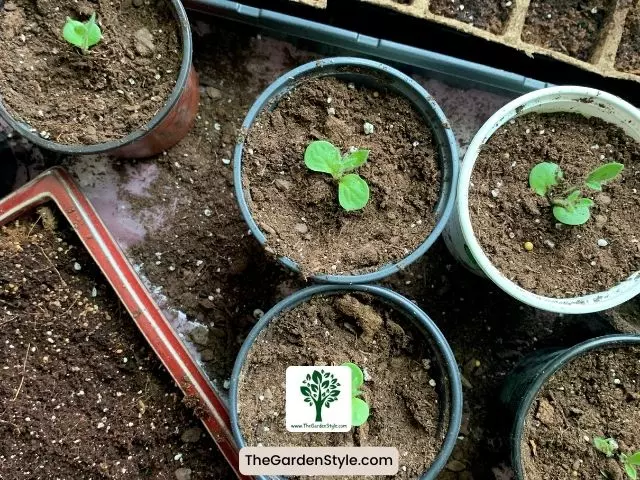
Choosing the Right Seeds to Start Indoors
When deciding which seeds to start inside, consider days to maturity, light needs, and growing habits. Choosing varieties suited to indoor sowing and containers improves success.
Look at Days to Maturity
Focus on starting plants that require 50 days or more to mature fully. Quick-maturing crops like radish and lettuce don’t gain much from the head start and take up valuable space. Long-season tomatoes, peppers, eggplant, and celery are ideal candidates.
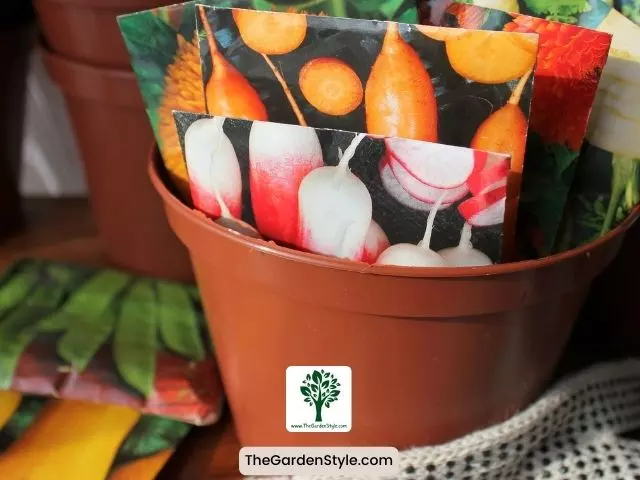
Consider Light and Space Requirements
Some plants like basil and parsley can grow leggy under low indoor light. Choose more compact varieties bred for containers if space is limited. Make sure your grow lights provide adequate intensity and proper spectrum for each crop.
Pick Container-Grown Varieties
Look for labels indicating a variety is well-suited for pots and indoor growing. Dwarf or patio/pot varieties are also good bets for indoor sowing.
Here is a chart with the best seeds to start indoors:
| Seed | Weeks Before Last Frost |
|---|---|
| Broccoli | 4-6 weeks |
| Brussels Sprouts | 4-6 weeks |
| Cabbage | 4-6 weeks |
| Cauliflower | 4-6 weeks |
| Celery | 10-12 weeks |
| Eggplant | 8-10 weeks |
| Leeks | 8-10 weeks |
| Lettuce | 4-5 weeks |
| Peppers | 8 weeks |
| Tomatoes | 6-8 weeks |
Here is a chart with some common flower seeds to start indoors and recommended weeks before the last frost:
| Seed | Weeks Before Last Frost |
|---|---|
| Alyssum | 4-6 weeks |
| Coleus | 8-10 weeks |
| Dianthus | 6-8 weeks |
| Geranium | 8-10 weeks |
| Impatiens | 6-8 weeks |
| Marigold | 4-6 weeks |
| Pansy | 6-8 weeks |
| Petunia | 6-8 weeks |
| Salvia | 8-10 weeks |
| Snapdragon | 5-7 weeks |
| Zinnia | 4-6 weeks |
Setting Up Your Indoor Growing Area
To successfully start seeds indoors, you need to recreate ideal germination conditions. This means providing proper lighting, containers, consistent heat, and air circulation.
Provide Proper Lighting
One of the biggest challenges for indoor seed starting is providing sufficient light. Seedlings need 14-16 hours under grow lights per day. LED grow lights provide full spectrum light without excessive heat. Position lights 2-4 inches above plants.
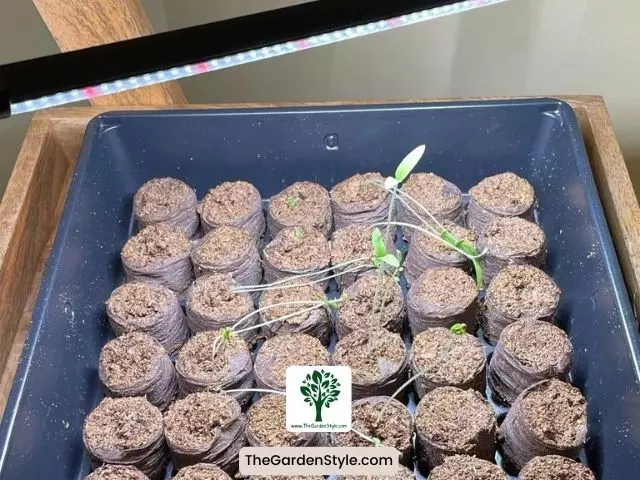
Use the Right Containers
Choose small containers like cell packs or trays with good drainage. Avoid peat pots, which restrict root growth when transplanted. Sterilized, soilless seed starting mix prevents damping off disease. According to gardening experts at the University of Minnesota, reusing old pots, tools, and potting media without properly sanitizing them first can allow damping-off disease pathogens to linger, infecting your new seedlings.
Invest in a Heating Mat
Proper soil warmth is crucial for robust germination and early seedling growth. Heating mats or a heat lamp can help maintain optimal soil temperatures between 75-80°F (24-27°C). Warm soil speeds up the germination process and produces stronger, healthier seedlings. Just monitor the temperature closely with a soil thermometer and adjust your heating set-up as needed to stay in the ideal range. Avoid excessive heat, as temperatures over 85°F (30°C) can damage tender roots and inhibit germination.
Arrange Air Circulation
Running a small fan near your seedlings creates a gentle breeze that mimics natural air movement and helps prevent fungal diseases. Mini greenhouses and plastic domes also allow you to increase humidity around young plants during the sensitive germination stage, while still allowing proper ventilation.
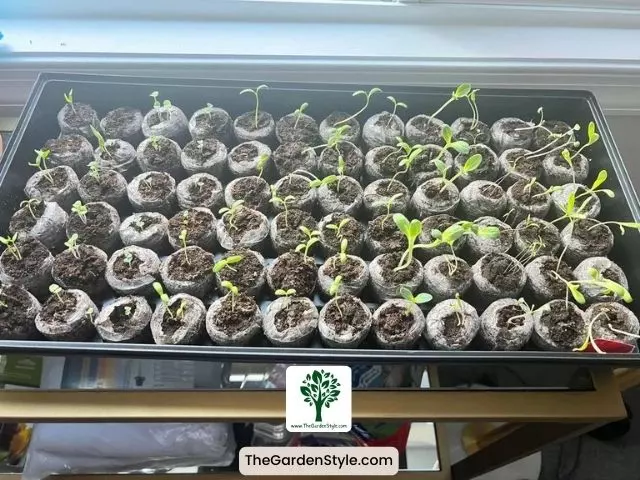
Starting Your Seeds
Getting your seeds started indoors doesn’t have to be a complex process. The key is following a few important guidelines for timing, planting depth, moisture, and temperature tailored to each variety. For instance, tomatoes prefer warm soil between 75-80°F (24-27°C) to sprout, so they are typically started 6-8 weeks before the last frost date. Plant the seeds 1⁄4 inch deep in seed starting mix kept evenly moist. With the proper conditions, tomato seeds should germinate within 5-12 days.
Know When to Sow
Checking seed packets for indoor start dates helps ensure sprouting is on schedule. Typically, seeds are started 4-8 weeks before the last average frost.
Prepare Your Seed Starting Mix
Opt for a sterile, soilless potting mix made specifically for seed starting. These quality mixes are finely textured to cling to moisture but porous to provide drainage, giving seeds the hydration and air needed to germinate. Before planting, thoroughly moisten the seed starting mix and evenly fill containers to your desired depth.
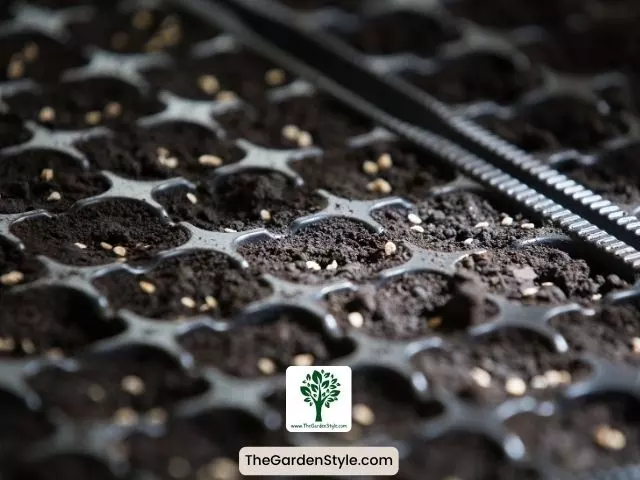
Sow Seeds at the Proper Depth
Check the recommended planting depth for each variety. Very fine seeds are simply pressed into the soil. Larger seeds are buried 1-2 times their size.
Follow Germination Instructions
Proper germination conditions vary by seed variety – some need light exposure while others prefer complete darkness to sprout. For example, marigold seeds need full overhead light to germinate, so simply press them into the seed starting mix surface. On the other hand, cucumber seeds germinate best in darkness, so cover with a thin layer of mix. Refer to each seed packet’s guidance for tailored timing and environment requirements.
Provide Consistent Moisture
Seed starting mix should be kept evenly moist but not soggy during germination. Dome lids help retain humidity in the first days.
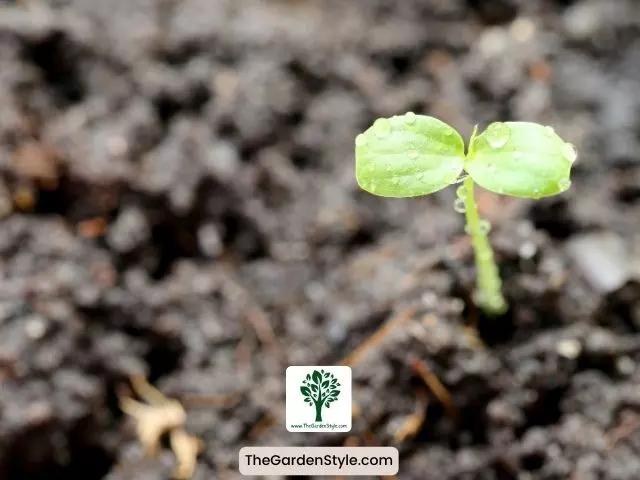
Caring for Seedlings
Proper care once sprouted is vital to growing stocky, healthy seedlings indoors. Provide ample light, regulate temperatures, fertilize lightly, and thin overcrowding.
Give Seedlings Enough Light
As soon as the first true leaves appear, get seedlings under grow lights for 14-16 hours daily. Insufficient light causes leggy, weak growth.
Regulate the Temperature
Temperatures between 65-75 F (18-24°C) are ideal for most seedlings. Lower temps at night help prevent stretching. Monitor soil heat if using mats.
Water Carefully
Use bottom water or a mister to avoid washing out tiny seedlings. Allow the soil surface to dry out slightly between waterings. Learn more about the worst time to water plants.
Fertilize Lightly
It’s best to wait until seedlings are more established before starting any fertilizer regimen. Feeding too early, when plants are just sprouting, can damage delicate young roots and foliage. A good rule of thumb is to hold off on fertilizing until seedlings have developed their first true set of leaves and reached about 2 inches (5 cm) in height. At this stage, they are ready for light nutrient solutions to support continued vigorous growth.
Thin Overcrowded Starts
Carefully snip off weaker seedlings at the soil level to give the strongest ones more space. Transplant extras or thin to 1-2 plants per cell.
Hardening Off and Transplanting Outdoors
Carefully harden off seedlings over 1-2 weeks to get them used to outdoor conditions before transplanting. This prevents the stress of sudden changes in temperature, light levels, and wind exposure. Search for robust, stocky specimens with no signs of legginess before selecting seedlings to plant into your garden beds.
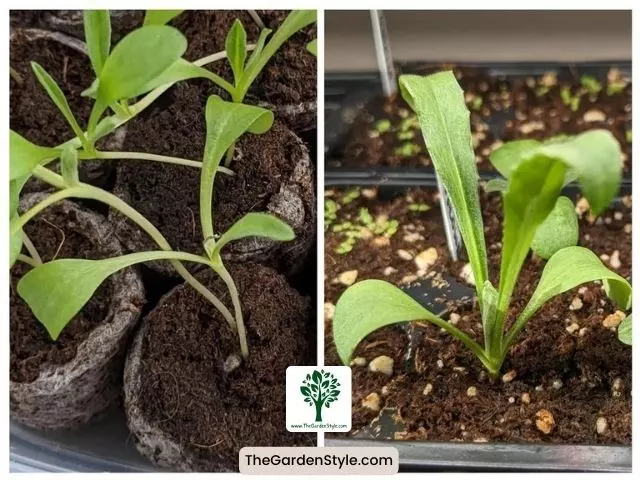
Gradually Expose to Outdoor Conditions
About 1-2 weeks before transplanting, start setting young plants outside for a few hours daily. Slowly increase the time outside.
Look for Signs They Are Ready
Look for seedlings with 4-6 fully developed true leaves and a network of healthy branched roots, as this mature size means they are ready to transplant. Avoid moving any plants that have begun flowering or fruiting, as the shock could cause them to drop buds.
Transplant on a Calm, Cloudy Day
Minimize wilting by planting out at day’s end. Water in the well and shelter sensitive plants if needed.
Conclusion
Starting your own seeds is one of the most rewarding parts of gardening. With the right timing and care, you can grow robust vegetable and flower seedlings indoors. This gives tender, heat-loving plants a head start on the season and ultimately leads to more tremendous success in the garden. Just be sure to provide seedlings with proper lighting, warmth, moisture, and nutrition in their early weeks of life. Gradually harden off the healthiest seedlings before moving into outdoor beds for season-long vigor.
Frequently Asked Questions (FAQs)
Optimal temperatures are 65-75 F during the day and 55-65 F at night. Fluctuating temps prevent leggy growth.
Most seedlings need 14-16 hours of bright light from grow lights each day. Light duration is especially important for preventing leggy, weak growth.
Yes, domes help retain moisture and humidity during germination. Keep them on for the first 5-7 days after sowing seeds. Then, remove domes to prevent fungal diseases.
Ideally, provide at least 2″ x 2″ of space per seedling. That prevents crowding and allows sturdy root growth. Larger cells provide even better results.
Signs seedlings are ready to include 4-6 true leaves, well-branched roots, and a stocky stem. Avoid transplanting if flowering or fruiting has started.
Leggy growth means plants aren’t getting enough light. Provide 16 hours under closer, brighter grow lights. A gentle fan circulating air also strengthens stems.
Seedlings that collapse or flop over likely have a fungal disease called damping off. Improve air circulation and avoid overwatering to prevent it next time.
Germination time varies widely but is typically 1-3 weeks. Quick germinators are radishes, lettuce, and petunias. Slow germination can take 3 weeks, like parsley, celery, and pepper.
Save these pins for later so you can use this gardening guide on how to start seeds indoors.
